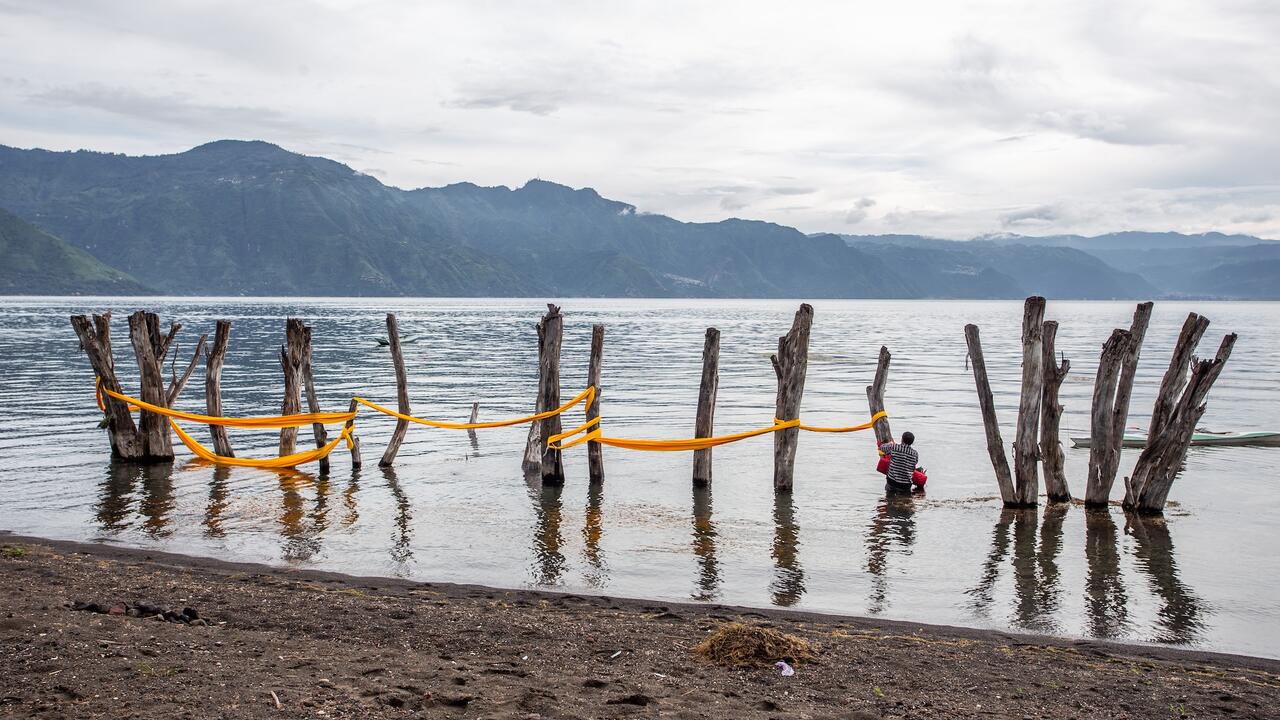Briefing
Guggenheim pull pieces from Chinese art show after animal rights protests; Berlin’s Volksbühne occupied; vandalism at Skulptur Projekte Münster
Guggenheim pull pieces from Chinese art show after animal rights protests; Berlin’s Volksbühne occupied; vandalism at Skulptur Projekte Münster

New York’s Guggenheim Museum will remove three artworks from its major new survey of Chinese experimental art from 1989 to 2008, ‘Art and China after 1989: Theater of the World’ (opening 6 October) following accusations of animal cruelty. The upcoming show, curated by Alexandra Munroe, Hou Hanru and Philip Tinari, has been hit by controversy since it was publicized, with animal rights groups protesting the inclusion of pieces including the video Dogs That Cannot Touch Each Other by Sun Yuan and Peng Yu, a video of a 2003 performance which featured pit bulls facing off on treadmills, restrained by leashes. The American Society for the Prevention of Cruelty to Animals claimed that the performance would have caused pain for the dogs and a widely circulated Change.org petition with over 599,000 signatures has accused the Guggenheim of ‘several distinct instances of unmistakable cruelty against animals in the name of art.’ Meanwhile, Ingrid Newkirk, president of People for the Ethical Treatment of Animals (Peta) wrote an open letter to the museum, claiming that Sun Yuan and Peng Yu’s work only catered to ‘sick individuals’. ‘The Guggenheim regrets that explicit and repeated threats of violence have made our decision necessary’, the museum said in a statement: ‘As an arts institution committed to presenting a multiplicity of voices, we are dismayed that we must withhold works of art.’ Other artworks pulled include the show’s titular artwork, Huang Yong Ping’s Theatre of the World (1993) – an installation which houses hundreds of insects and reptiles devouring each other over the duration of the exhibition, and Xu Bing’s seminal 1994 piece A Case Study of Transference, recording two pigs mating, their skin stamped with hybrid (nonsensical) marks composed out of Chinese characters and the Roman alphabet.
Berlin’s storied Volksbühne Theatre has been occupied by a group of activists called ‘Dust to Glitter’, in a protest against rising rents making life hard for the city’s artists. The group say that their aim is the ‘reclamation of public space in a decade of privatization and commercialization’ – a spokesperson for the activists, Sarah Waterfield, said that the occupation had been planned for several months and carried the approval of several members of Volksbühne staff. The occupation began on 22 September and grew to 3,000 people with news spreading across social media networks. The organizers of Dust for Glitter are planning to stage projects at the Volksbühne including a ‘parliament of the homeless’ and an ‘anti-gentrification centre’ over the next few months. The institution – founded in 1890 as a theatre for a working class audience – has had a turbulent period with the appointment of Chris Dercon (former director of the Tate Modern in London) replacing Frank Castorf as director – interpreted by many as a swerve away from its radical history towards more commercial programming. Dercon has condemned the 'Dust to Glitter' occupation.
Belgian dealer Axel Vervoordt has launched a new cultural and residential complex in Belgium: Kanaal will become home to the Axel Vervoordt Company and the Axel and May Vervoordt Foundation. The property was originally a 19th-century malting distillery. Work is set to be completed by 30 November, and the inaugural exhibition will include work by ZERO and Gutai artists.
Skulptur Projekte Münster has been hit by vandalism yet again – Nicole Eisenman’s plaster and bronze sculpture Sketch for a Fountain (2017) was defaced with swastikas and graffiti. The exhibition organizers said in a statement: ‘We are deeply disgusted by such a violation and understand this as an attack against the values of the work’. The vandalism took place on the eve of the German elections, which saw a far-right party – Alternative for Germany – win seats in parliament for the first time in half a century. Eisenman’s piece had previously been attacked earlier in July with a head from a plaster figure removed.
Nicola Trezzi has been named as director and chief curator of Center for Contemporary Art Tel Aviv. Trezzi will take up the role in early 2018. Trezzi has been head of the MFA programme at Jerusalem’s Bezalel Academy of Arts and Design since 2014, and was formerly US editor of Flash Art International. The museum’s founding director Sergio Edelsztein will oversee the transition period.
Marko Daniel has been named director of Barcelona’s Joan Miró Foundation, and will take up the position in January 2018. Daniel replaces Rosa Maria Malet who is retiring after heading up the foundation since 1980. Daniel is currently a curator at London’s Tate Modern and Tate Britain.
Several artists participating in a German art show in Beijing, ‘Deutschland 8: German Art in China’ have protested against the exhibition’s sponsorship by Dusseldorf-based arms manufacturer Rheinmetall, recently said to be involved in a controversial tank-building deal with Turkey. The artists, including Hito Steyerl, said that they did not know of Rheinmetall’s involvement until logos appeared on an official invitation, and protested the ‘instrumentalization’ of their work in the cause of Rheinmetall's corporate image.






















